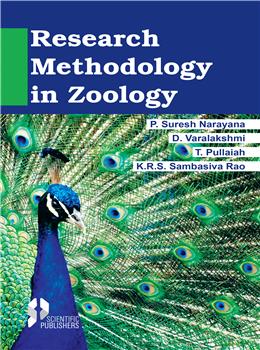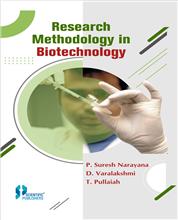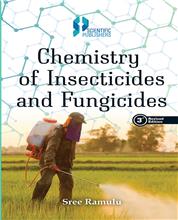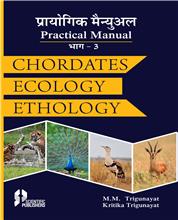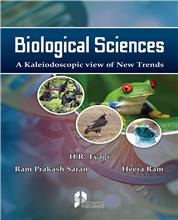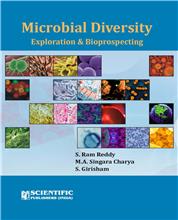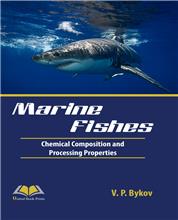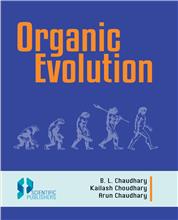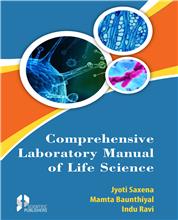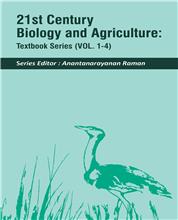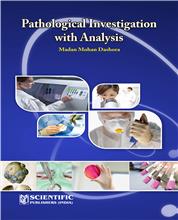1. Research Methodology
Introduction
What is Research?
Who is a Research Scholar?
What is Methodology?
Quality Research
Types of Research
Research – Basic Approache
Research Data – What it is?
Research Writing
Reasons for Research
Writing a Paper/Dissertation
Criteria of Good Research
Research – Significance
2. Centrifugation
Introduction
General Methods of Separation
Centrifugation
Centrifuge – the Machine
Types of Centrifugation
Selection of a Suitable Density Gradient Medium
Density Gradient Media – Types
Fractions – Collection
Measurement of Gradient Density
Sample Application to the Gradient
Recovery and Monitoring of Gradients
Analysis of Sub-cellular Fractions
Presentation of the Results
Types of Centrifuges
Rotors – Types and Designs
Centrifugation – Technique
Rotors – Selection
Rotors – Accessories and Care
Centrifuge – Containers
Selection of Centrifuge Tubes
Ultracentrifuge – Hazards met with during the Operation
What are the Centrifuges used for?
Centrifuges used in Forensic and Research labs
Centrifuges – Safety Aspects in Use
Centrifugation – Applications in Biotechnology
Many Uses of a Centrifuge
3. Electrophoresis
Introduction
Electrophoresis – Definition
Brief History of Electrophoresis
Basic Theory of Electrophoresis
How Electrophoresis Works and Separation Occurs?
Electrophoresis – Method
Factors that Affect Electrophoresis
Instrumentation for Electrophoresis
Electrophoresis – Apparatus
Types of Electrophoresis
Techniques Commonly Used in Molecular Biology and Biochemistry
Routine Electrophoresis
Paper Electrophoresis
Disc or Discontinuous Electrophoresis
Column Electrophoresis
Immuno-electrophoresis
Capillary Electrophoresis
Gel Electrophoresis
Slab Gel Electrophoresis
Iso-electric Focusing
Continuous Electrophoresis
Thin Layer (Paper) Electrophoresis
1 D - Electrophoresis
2 D – Electrophoresis
Gel Electrophoresis
SDS PAGE Technique
Protein Gel Stains
Polyacrylamide Gels
Precast Gels
Agarose Gel Electrophoresis
Agarose versus Polyacrylamide
Starch
AGE – General Protocol
Detection Methods - Blotting Techniques
Applications of Electrophoresis
4. Spectrophotometry
Introduction
Spectrophotometry
The Device and the Mechanism
Spectrophotmetric Analysis – General Approach
Using the Instrument – SPEC-20 or SPECTRONIC-20
Applications of Spectrophotometry
Atomic Absorption Spectroscopy
Spectrometer –Measurements
AAS – Other Techniques
Uses of AAS
Applications of AAS
5. Chromatography
Introduction
Chromatography – Definition
Chromatography – Brief History
Chromatography – Types and Techniques
Paper Chromatography – General Protocol
Thin Layer Chromatography
Gas Chromatography
Gas Solid Chromatography
Gas Liquid Chromatography
High Performance Liquid Chromatography
Chromatography – Applications
6. Polymerase Chain Reaction (PCR)
Introduction
PCR – What it is?
PCR – Principle
PCR – General Protocol
PCR – Different Schemes and Types
Applications of PCR in Different Disciplines
PCR – Benefits, Drawbacks and Limitations
Conclusion
7. Chemical Analysis of Animal Tissues
Histology
Histology - History
Histochemistry
Histochemical Techniques
Fixation
Processing – Dehydration
Embedding
Sectioning
Staining of Fixed Material
Common Laboratory Stains
Artifacts
Staining Methods
Mounting
Permanent Stained Preparations – General Methods
Analysis of Organic Components
Analysis of Carbohydrates
Carbohydrates
Mucins
Fixatives
Carbohydrate Staining
Nucleic Acids
Feulgen Stain
Methyl Green Pyrogen Method
Lipids
Sudan Black B
Amyloid
Congo Red
Alkaline Congo-red Technique
Polarizing Microscopy and Congo Red
Methyl Crystal Violet Method
Analysis of Proteins by Special Stains
Total Protein Stains
Coomassie Stains
Silver Stains
Applications of Silver Staining
Analysis of Organic Components with Special Stains
Special Stains
Special Stains-Background
Usual Special Stains
Imunoperoxidase Stains
Analysis of Carbohydrates
Analysis of Lipids
Analysis of Proteins and Amino Acids
Analysis of Nucleic Acids
Enzyme Histochemistry
Conclusion
8. Animal Culture Techniques
Introduction
Culture Techniques
Animal Cell Culture
Animal Cell Culture – History
Types of Animal Cell Culture
Tissue Culture
Organ Culture
Explant/Organotypic Culture
Dissociated Cell Culture
Other Important Types of Culture
Requirements in Animal Cell Culture
Culture Media
Culturing Animal Cells – Selecting Sources of Tissues
Selecting Types of Animal Cell Culture
Types of Media Used in Animal Cell Culture
Do`s and Don`ts of Cell Culture – Basic Techniques
Animal Cell Culture – Applications
Animal Cell Culture – General Protocol
9. Water Pollution
Introduction
Definition
Water Quality
Common Pollutants of Water
Water Monitoring – Importance
Measuring Water Quality – Parameters
Water Quality - Parameters by Intended Use
Water Quality Monitoring
Monitoring Strategy
Environmental Impact Assessment
Drinking Water indicators
Environmental Indicators
Microbiological Testing/Analysis
Bio- or Biological Monitoring
Monitoring and Toxicology
Toxicity – Characterization
Assessment of Risk
Environmental Toxicology
Aquatic Toxicology
Toxicity – Measurement
Toxicology – Terminology
LD50 and LC50 – Introduction
Bio-accumulation or Bio-concentration
Bio- or Biological Magnification/Bio-amplification
Bio-accumulation versus Bio-magnification
10. Environmental Impact Assessment
Introduction
EIA – History
EIA – Purpose
EIA – Legal Sanctity
EIA – Different Steps
EIA – Assessment Methods
EIA – Projects and Process of Clearance
EIA – Follow-up
EIA – Around the World
Environmental Assessment
EIA – Content
EIA – Structure
EIA – Procedure
Environmental Impact Statement
Trans-boundary Application
EIA in India
EPA in India
Amendments to the EPA, Rules, 1986
EPA, 1986 – Important Definitions
Environmental Appraisal Committees
Environmental Appraisal Procedure
Environmental Appraisal Monitoring
11. Biostatistics and Animal Research
Introduction – Statistics and Biostatistics
Statistics and Biostatistics – Definition
Differences between Biostatistics and Statistics
Biostatistics – What it is?
Brief History of Biostatistics
Role of Statistics in Biology
Importance of Mathematics in Biology and Areas of Research
Importance of Statistical Analysis
Common Factors shared by Botanists and Zoologists
Statistical Applications in Biological Research
Averages
Statistical Averages
Statistical Mean
Standard Deviation
Standard Error
Analysis of Variance (ANOVA)
Chi-Square Test
Student `T` Test
Common Problems faced by the Researcher
Statistical Software
Modern Biostatistics
Role of Statistics in Biology and Medicine
Applications of Biostatistics
Use of Statistics in Daily Life
12. Computer Applications in Animal Science
History of Computers – Time-line of Evolution
Classification of Computers
Five generations of Computers
First Generation – Vacuum Tubes
Second Generation – Transistors
Third Generation – Integrated Circuits
Fourth Generation – Micro-processors
Fifth Generation – Artificial Intelligence
Computer Applications in Animal Science
Methods in Zoology
Use of Computers
Applied Zoology
Using the Web for Research
Variety of Tools used by Zoologists
Animal Traps
Collection Containers
Tracking Devices
Computer Software
13. Word Processing With a Computer
Introduction
Essential Functions of Word Processing
Advanced Features of Word Processing
Computer Software for Word Processing
Word processing – Advantages and Disadvantages
14. Word Processing Software
Introduction
Microsoft Word
Microsoft Powerpoint
Microsoft Excel
15. Internet Concepts
Internet – What it is?
Basic Concepts of Internet
16. Electronic Mail
Introduction
History of Email
Email – Time Line of Evolution
Email Software Platforms
Email – Spelling Options
Origin of Email
How to Send and Receive Email?
Email Online
How to Write an Email?
Email – Structure
Email – Rules for Proper Use
Important Criteria to the Success of Email
How Email Works?
17. File Transfer Protocol
Introduction
Objectives of FTP
The FTP Server – History
FTP – How does it work?
The FTP Model
Mode of File Transfer
Passive FTP
Further FTP Security
Secure File Transfer
How to use FTP?
